Arts
India And The World

Yoga in Times Square
India has long held an exotic appeal for the Western world.
At a recently concluded exhibition, titled India and the World: A History in Nine Stories, at the Chhatrapati Shivaji Maharaj Vastu Sanghralay (CSMVS) in Mumbai, among the many iconic pieces of art on display was an Islamic gravestone. It was likely carved in the then princely state of Cambay, Gujarat, and found in Aden Yemen, personalized with the name of the deceased, Abu’l-Hassan. Dated sometime in the 15th century, the gravestone, discovered 1864 miles from the port city of Gujarat where it was chiseled, signals that Indian-made tombstones were sought after by Muslims as far as the Arabian Peninsula, Indonesia and East Africa. This notwithstanding the long journeys across the Indian Ocean often meant that the gravestones took several months to arrive from India.
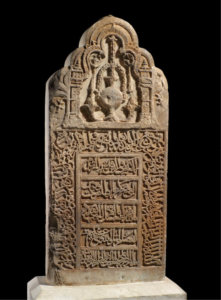
Islamic gravestone likely carved in Cambay, Gujarat, found in Aden Yemen. Photo: The British Musuem
Also seen at the exhibit is a paper drawing by Rembrandt. Intriguingly enough, the drawing by one of the world’s greatest visual artists, depicts not the Dutch Golden Age, of which he was exemplar, but Mughal Emperor Jahangir. Copied by the artist in the Mughal miniature painting style, the drawing shows Jahangir seated on a court divan in his regalia receiving an officer.
Rembrandt, was so impressed with the detailing of the 17th century Mughal miniature paintings that he drew 25 paintings and etchings of Mughal rulers of his times, including Shah Jahan and Jahangir, and incorporated the techniques into his other works as well. Rembrandt likely acquired the Indian paintings from the merchant vessels that plied between India and Holland.
The CSMVS exhibit displayed 228 artworks highlighting the connection India shared with the world, including Indian textiles excavated in Fustat and Qasr Ibrim in Egypt between 1250-1350 AD, a Ganesha stone statue from the 12th century found in Java, Indonesia, Harappan era seals from 2500 BC found in Iraq, and scores of other artifacts.
India has long held an exotic appeal for the Western world. Indian influence is scattered through the ages — from ancient times to the European Middle Ages, the Renaissance, colonial expansion, and post-colonialism on to the migration of the Indian diaspora in recent years.
It reflects in the propagation of Buddhism across Central and South-East Asia to inspirations both perceptible and imperceptible, in the West. Modern-day influences, such as yoga, spices, Ayurveda, ethnic fashion, the Hare Krishnas and other forms of spirituality movements are the most visible symbols, but there are also less intangible, but impactful ones, such as the invention of the zero by Bhramagupta in 628 AD.

Haraoppan seal from 2000 to 2500 BC found in Hillah (Babylon), Iraq. Photo: The British Museum
According to Peter Gobets, secretary of the ZerOrigIndia Foundation, or the Zero Project in the Netherlands, “The Indian (or numerical) zero, widely seen as one of the greatest innovations in human history, is the cornerstone of modern mathematics and physics, plus the spin-off technology.”
Marcus du Sautoy, professor of mathematics at the University of Oxford, told Life Science: “Today we take it for granted that the concept of zero is used across the globe and is a key building block of the digital world. But the creation of zero as a number in its own right, which evolved from the placeholder dot symbol found in the Bakhshali manuscript, was one of the greatest breakthroughs in the history of mathematics.
Pulling The Strings
An exhibit, titled Indian Puppets: The Great Stories and Dancing Dolls, at the Center for Puppetry Arts in Atlanta, explores how the Indian puppetry tradition influenced art and culture across the world. Museum founder, Nancy Staub, a renowned American puppeteer, says: “There are several important traditions and techniques of puppetry in India that have inspired and influenced western puppeteers. The profound spirituality of the shadow traditions and the Pavakatakhali hand puppets reinforce faith in the power of puppetry.”
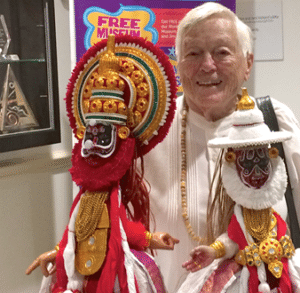
Nancy Staub
Kathy Foley, professor of theater at the University of California, Santa Cruz, who teaches South East Asian studies, says that U.S. and Indian puppetry have long being connected: “In the 1970s many theater people were traveling freely to India and the performances we saw astounded. We all said, what stories, what music, what dance, what visual imagery! That is what Peter Brook or Jerzy Grotowski or many others saw and tried to emulate in performance. Pieces like Julie Taymor’s Lion King were really born out of that ‘wow’ experience of Julie spending time studying Asian puppetry.”
Staub adds that Indian inspirations are widespread in Western art and culture as well: “The spectacular theater production of The Mahabharata by British Peter Brooks epitomized the great influence of Indian theater on the West. The renowned Théâtre du Soleil directed by Ariane Mnouchkine in Paris used elements of Indian performance traditions. In music, Ravi Shankar not only performed and taught in the west, but created fusion pieces for symphony orchestra and influenced popular musicians, including the Beatles. Phelim McDermott’s highly acclaimed production of Philip Glass’s opera, Satyagraha, concerning Gandhi too includes puppetry.”
Ancient to Popular
While for many millennial Americans the earliest Indian awakening might have been in the form of Yoga, the inspiration dates centuries earlier. In the 19th century, Ralph Waldo Emerson, essayist, poet and leader of the transcendentalist movement, was strongly influenced by Hindu philosophy. His journals make frequent references to the Bhagvad Gita. Author Shanta Acharya in her book Influence of Indian Thought on Ralph Waldo Emerson, writes that Emerson was impressed by Kalidasa’s poetry and Vedantic principles: “Emerson had never been to India, but his ‘Transcendentalism,’ led him to the ancient Indian writings. By the time he read them in translations, he had arrived at his own seminal ideas as expressed in his essays in Nature, The American Scholar, Man, the Reformer among others. So, while he was not inspired by the Indian thought, when he discovered it, it served to bolster his own ideas about aspects of life, he was engaged with — for example, the concept of the self, the question of the evil, illusion, compensation etc.”
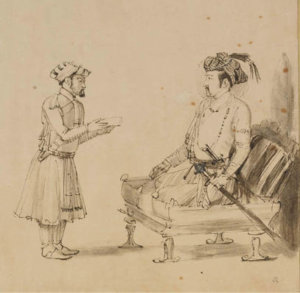
Jahangir receiving an officer by Rembrandt, about AD 1656–1661, Holland. Photo: The British Museum
Indentured laborers shipped to British colonies worldwide have also left their imprints. Indian influence in the Caribbean is apparent in food, music, art and architecture. Barrackpore and Chandernagor are not just villages in West Bengal, but also in Trinidad, where Indians constitute the plurality of the population. The curry and roti are the mainstay of Caribbean food and in 1961 Afro-Trinidadian political parties even expressed their resentment of the Indian dominated government with “We don’t want no Roti government” slogans.
Sikh migrant farmworkers in Central Valley California helped lay the foundations of the young state in the early 1900s. Karen Leonard, professor of anthropology at the University of California has written on the cultural assimilation through Mexican Punjabi marriages during that period in her book Making Ethnic Choices: California’s Punjabi-Mexican Americans.
Mahatma Gandhi and his principle of non-violence have especially resonated worldwide. Rev Martin Luther King Jr., who visited India in 1959, famously said: “To other countries, I may go as a tourist, but to India, I come as a pilgrim…If this age is to survive, it must follow the way of love and nonviolence that (Gandhi) so notably illustrated in his life.”
South Africa’s Nelson Mandela too drew inspiration from Gandhian philosophy. Harris Majeke, South Africa’s ambassador to India, once said: “While Nelson Mandela is the father of South Africa, Mahatma Gandhi is our grandfather. Mandela was inspired by the Satyagraha campaign led by Gandhi. It was a compelling act of passive protest against oppression. This would later inspire the formation of the African National Congress and strengthen Mandela’s belief in our shared humanity.”
American Veda
Los Angeles based author Philip Goldberg, author of America Veda: From Emerson and the Beatles to Yoga and Meditation How Indian Spirituality Changed the West, says: “I conceptualized American Veda because Indian spiritual influence had been building in America for more than a century and were very apparent if you knew where to look. I witnessed the growth of that influence firsthand from the late 1960s with the baby boomer counterculture and gradually into the mainstream, reaching from those interested in ideas and consciousness to those seeking personal growth, better health and relief from anxiety and depression. Over the years I saw the influence spread wider and deeper into society — reflected in changes in mental health, medicine and spirituality.”
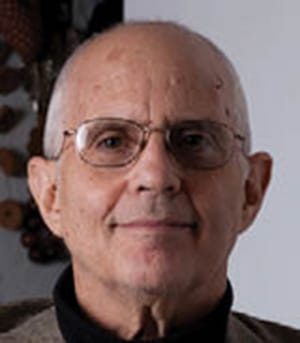
Phil Goldberg in his book American Veda illustrates many ideas from yoga to Vedic principles that shaped western sensibilities.
By far the most visible expression is in the growth in the yoga movement. A 2016 study by Yoga Journal and Yoga Alliance found that annual spending on yoga in the United States topped $16 billion and the number of practitioners 36 million, or almost one in seven adult Americans.
Goldberg views yoga as India’s greatest gift to the West: “I’m talking about yoga in the biggest sense of the word, not just the physical practice that is synonymous with yoga today. That’s just one of many streams through which the profound truths of the Vedic tradition have penetrated the fabric of Western society. I’m talking about the core precepts of Vedanta, which more and more have come to reflect the attitudes and beliefs of Americans and Europeans when it comes to religion, spirituality, and human development. The precepts voiced millennia ago by the Himalayan rishis have become part of a common worldview, and the practices associated with yoga, including meditation, have become mainstream.”
The quest for spirituality and inner peace through yogic means or meditation has churned Western culture. Today yoga centers, retreats, boot camps, cruises and meditation mantras are as mainstream as apple pie in America.
Sociologist Koyel Bandyopadhyay cautions, however: “India is often viewed as the very exotic country where people (white people) would come to find their nirvana. I mention the race angle because that demographic is the more regular customer of ‘spirituality.’ One can’t see black, or aboriginal or Chinese people coming to India for spirituality. And in a way, it binds with the concept of ‘orientalism’—the exotic East.”
Appropriation & Migration
In recent years, Indian bangles, bindis mehendi, etc. have acquired outsized international appeal. Bandyopadhya is critical of their distorting effects too: “The mehendi is popularly known as henna tattoos in the West. Culturally, we use mehendi on our hands on auspicious occasions. It is not a sign of rebellion, which a tattoo might be viewed as. So, a henna tattoo appears as a very funny term.”
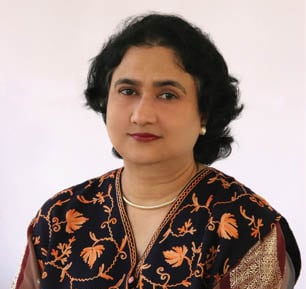
Shanta Acharya
Author Shanta Acharya says: “When I arrived in Oxford, I noticed that people referred to India, while speaking to me without having much knowledge of India. In literature too, one comes across references to the East, Orient, India, which though vague, often represent the personality of the writer.”
Increasingly, the new wave of Indian migrants are spicing up global trends.
US-Santa Cruz’s Foley says: “I live in the Bay area. With the rise of the IT and the NRI community here we see so much wonderful Indian work. This is of course shifting from first to second generation where the content starts to shift more. Mythili Kumar’s group (Abhinaya) just did Cesar Chavez and the United Farmworkers’ story in Bharatanatyam. Vinita Belini’s En’Acte did a Conference of the Birds that included all segments of the Silicon Valley mosaic (folkloric, Chinese dance, ballet — we are birds of many feathers on a common journey). Peter Brook was recently back at American Conservatory Theatre with a pared down Mahabharata story. India is here too. Indian arts, due to the enculturation that parents are seeking through classes in music and dance and so on are really now American arts—and this is just going to grow.”
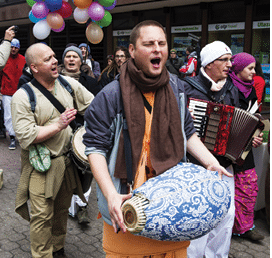
Hare Krishna devotees in Budapest, Hungary.
She contrasts it with the first wave of migration: “During the big European migrations from Ireland in the late 19th century or from Southern Europe in the early decades of the 20th century, people felt they had to leave language and culture behind. That group was coming in at the bottom of the social ladder and divested quickly of cultural characteristics in self-protection. But here we are seeing a generation that is an educated, empowered group near the top, and India has continued to rise as a global partner in US transnational partnerships. As in the 1970s, we saw the rise of kabuki or noh or anime influencing American theatre and film, so we are seeing rises in things Indian — not just the ‘religious east’ of the Beatles’ Hari Krishna period 1970s, but the global Bollywood and understanding of India and China as global forces in culture. Monsoon Wedding the Musical played in Berkeley last year to sold out houses. American attention is often pragmatic—as it sees the economy flowing one direction it starts to give serious attention to culture in all its dimensions, traditional and modern.”
The influences big and small are everywhere. Prof Foley, who delivered a lecture at the ongoing Indian puppetry exhibit in Atlanta, says “We only had a small space at the Center for Puppetry Arts and could only show a snippet — but India is full of big stories which can change, renew, and morph in 1000 ways. ”

You must be logged in to post a comment Login